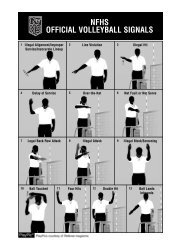
The antennae are considered as part of the net and laterally delimit the crossing space. The top 80 cm of each antenna extends above the net and is marked with 10 cm stripes of contrasting colour, preferably red and white. The antennae are placed on opposite sides of the net. They are considered part of the net.Īdvertising is permitted on the side bandsĪn antenna is a flexible rod, 1.80 m long and 10 mm in diameter, made of fibreglass or similar material.Īn antenna is fastened at the outer edge of each side band. Two coloured bands, 5 cm wide (same width as the court lines) and 1 m long, are fastened vertically to the net and placed above each side line. Publicity may be printed on the above items as per EFVL regulations. It is permissible to have advertising on the horizontal bands of the net.įor EFVL, World and Official Competitions, an 8.0 m net with smaller meshes and brandings displayed between the ends of the net and the posts may be used, provided that the visibility of the athletes and officials will be preserved. Within the bands, there is a flexible cable in the upper one and a cord in the bottom one for fastening the net to the posts and keeping its top and bottom taut.

Each extremity of the upper band has a hole through which passes a cord fastening the upper band to the posts to keep the top of the net stretched taut.

#VOLLEYBALL REF SIGNALS FULL#
At its top and bottom there are two 7-10 cm wide horizontal bands made of two-fold canvas, preferably in white or bright colours, sewn along its full length. The net is 8.5 m long and 1 m (+/- 3 cm) wide when it is hung taut, placed vertically over the narrow axis at the middle of the court. The weather must not present any danger of injury to the players.įor EFVL, World and Official Competitions, played at night, the lighting on the playing area should be 1,000 to 1,500 lux measured at 1 m above the surface of the playing area.
#VOLLEYBALL REF SIGNALS FREE#
There is only the court, service zone and the free zone surrounding the court.ġ.4.1 The service zone is an 1 m wide area behind the end line which extends to the edge of the free zone. When cords used,it must be ensured, that the cords will be good seen at every time of the game. Both side and end lines are placed inside the dimensions of the playing court.ġ.3.3 Court lines should be ribbons made of a resistant material, and any exposed anchors should be of a soft, flexible material.ġ.3.4 Cords may be used (same rules as up). The lines must be of a colour which contrasts sharply with the colour of the sand.ġ.3.2 Two side lines and two end lines mark the playing court. It should not be too fine to cause dust and stick to the skin.ġ.2.5 For EFVL, World and Official Competitions, a tarp to cover the central court is allowed in case of rain.ġ.3.1 All lines are 5 cm wide. The free playing space shall measure a minimum of 12.5 m in height from the playing surface.ġ.2.1 The surface must be composed of leveled sand, as flat and uniform as possible, free of rocks, shells and anything else which can represent risks of cuts or injuries to the players.ġ.2.2 For EFVL, World and Official Competitions, the sand must be at least 40 cm deep and composed of fine loosely compacted grains.ġ.2.3 The playing surface must not present any danger of injury to the players.ġ.2.4 For EFVL, World and Official Competitions, the sand should also be sifted to an acceptable size, not too coarse, and free of stones and dangerous particles. The free playing space shall measure a minimum of 7 m in height from the playing surface.ġ.1.2 For EFVL, World and Official Competitions, the free zone is a minimum of 3 m and a maximum of 6 m from the end lines/side lines. The free playing space is the space above the playing area, which is free from all obstructions.

It shall be rectangular and symmetrical.ġ.1.1 The playing court is a rectangle measuring 16 x 8 m, surrounded by a free zone, which is a The playing area includes the playing court and the free zone.


 0 kommentar(er)
0 kommentar(er)
